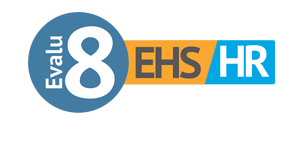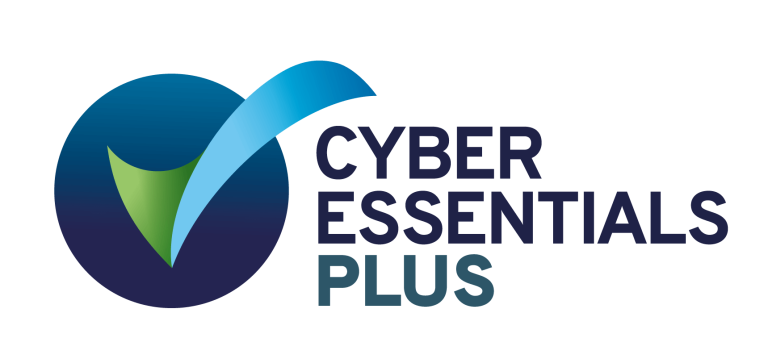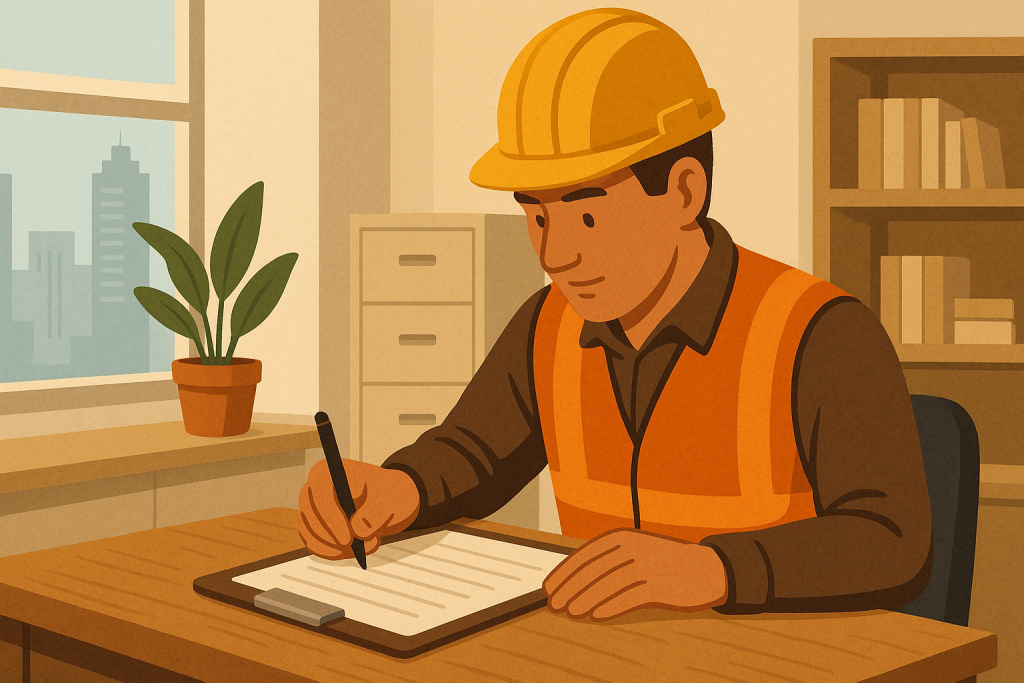
RAMS, which stands for Risk Assessment and Method Statement, are an integral part of project management. They help ensure the safety and well-being of workers and the general public during construction projects. As a H&S professional, you may wonder if you can write your own RAMS. Let alone if it can be done in under 10 mintues!
In this article, we will delve into the basics of RAMS, explore their importance in project management, examine the legal requirements, and provide steps to help you write your own RAMS in under 10 minutes.
How Evalu-8 HR Simplifies Your RAMS Process
Evalu-8 HR’s integrated RAMS feature lets you draft, share and update your Risk Assessment and Method Statement in minutes using industry-vetted templates and real-time collaboration tools. Automated review reminders and a full audit trail ensure your documents stay current and compliant, while seamless integration with rota planning and time-&-attendance means the right RAMS reaches the right team member exactly when they need it, no extra admin, no paper chase.
Helpful Summary
Overview: This article breaks down how to create your own RAMS (Risk Assessment and Method Statement) quickly and effectively. It explains the basics of RAMS, outlines legal requirements, and walks you through a four-step process identifying risks, assessing their severity, implementing controls, and monitoring/reviewing so you can draft a compliant document in under 10 minutes.
Why trust us: As health & safety professionals with hands-on experience in construction and project management, we understand the real-world pressures of keeping sites safe, meeting statutory obligations, and delivering on time. Our guidance is drawn from industry best practices, incident data, and regulatory frameworks.
Why it matters: Well-written RAMS are more than paperwork they’re the blueprint for preventing accidents, protecting workers and the public, and maintaining project continuity. A concise, up-to-date RAMS reduces misunderstandings, streamlines site operations, and fosters a proactive safety culture.
Action points:
Use our four-step template to draft your RAMS in under 10 minutes.
Engage your team: involve supervisors and operatives to uncover hidden hazards.
Categorise risks: by likelihood and impact to focus controls where they matter most.
Implement and test: practical control measures with frontline staff.
Set a review schedule: inspect regularly, capture feedback, and update your RAMS whenever project conditions change.
Steps to writing your own RAMS
Identifying potential risks
The first step in writing your own RAMS is to identify potential risks associated with the project. This requires a comprehensive assessment of the tasks involved, the working environment, and the equipment used. Engage with relevant stakeholders, such as supervisors and workers, to gather insights and ensure all potential risks are considered.
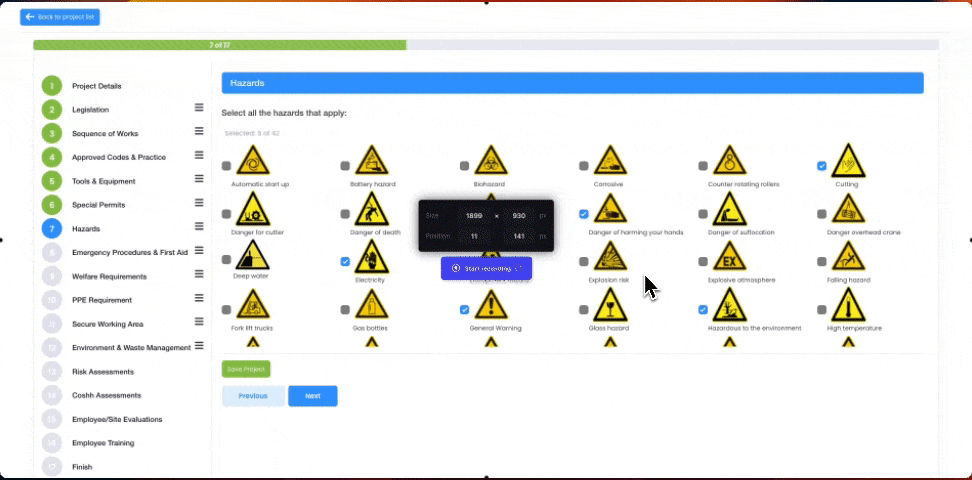
Quickly identify and include risks in your RAMS with Evalu-8 EHS
During this process, it is important to take into account any previous incidents or near misses that have occurred on similar projects. By learning from past experiences, you can proactively address potential risks and prevent accidents from happening in the future. Additionally, consulting industry guidelines and regulations can provide valuable guidance in identifying common risks specific to your project.
Assessing the severity of risks
Once potential risks have been identified, it is essential to assess their severity. This involves evaluating the likelihood of the risk occurring and the potential consequences if it does. By categorising risks based on their severity, you can prioritise control measures and allocate resources effectively.
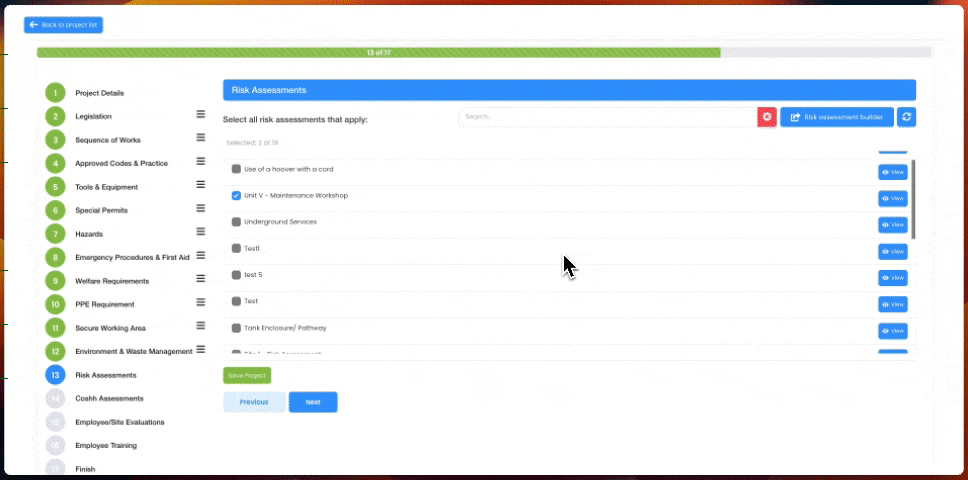
Easily include Risk Assessments in your final RAMS document with Evalu-8 EHS
When assessing the severity of risks, it is crucial to consider both the immediate and long-term impacts. While some risks may have immediate consequences, others may have long-lasting effects on the health and safety of workers. By taking a holistic approach to risk assessment, you can ensure that all potential hazards are adequately addressed.
Implementing control measures
After assessing the severity of risks, the next step is to implement control measures. These measures should be designed to eliminate or minimise risks and should be specific to each task and hazard identified. Effective control measures may include providing training to workers, implementing safety signage, and ensuring the use of personal protective equipment.

Include control measures in one click
It is important to involve workers in the development and implementation of control measures. Their firsthand knowledge and experience can provide valuable insights into the practicality and effectiveness of proposed measures. By fostering a culture of collaboration and open communication, you can create a safer working environment for everyone involved in the project.
Monitoring and reviewing the process
Lastly, it is crucial to monitor and review the effectiveness of the RAMS on an ongoing basis. Conduct regular inspections and provide a feedback loop for workers to report any issues or suggest improvements. This continuous monitoring and review process will help identify any changes in project conditions and ensure that RAMS remain up to date and relevant.
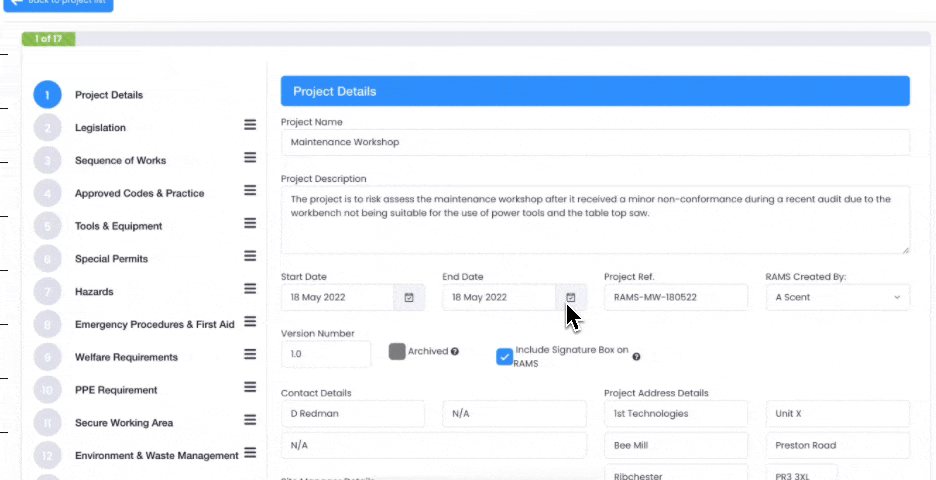
With Evalu-8 EHS you can always have the most up to date version and you can set end dates for reveiw
Regularly reviewing the RAMS also provides an opportunity to learn from any incidents or near misses that may have occurred during the project. By analysing these events, you can identify any gaps in the risk assessment process and make necessary adjustments to prevent similar incidents in the future. This proactive approach to safety management helps create a culture of continuous improvement and ensures the well-being of everyone involved in the project.
See how to write a RAMS in under 10 minutes with Evalu-8 EHS
Common mistakes to avoid when writing RAMS
Overlooking minor risks
One common mistake when writing RAMS is focusing solely on major risks and overlooking minor ones. While major risks may have more severe consequences, minor risks can still lead to accidents and injuries. It is important to assess and address all risks, regardless of their severity, to maintain a safe working environment.
Neglecting to update RAMS
Risks and project conditions can change over time. Neglecting to update RAMS regularly can render them ineffective and increase the likelihood of accidents. Make sure to review and update RAMS whenever there are significant changes to the project scope, tasks, or operating procedures.
Inadequate training for staff
Providing adequate training for staff is essential to ensure they understand the RAMS and can implement the necessary safety procedures. Inadequate training can lead to misunderstandings or missed steps in the RAMS, which can increase the risk of accidents. Invest in comprehensive training programs and provide regular refresher courses to keep staff up to date.
In conclusion, while writing your own RAMS is possible, it is important to understand the basics, comply with legal requirements, and follow a structured approach. RAMS are essential for project management, ensuring the safety of workers and preventing accidents. By avoiding common mistakes and continuously reviewing and updating RAMS, you can create an effective framework that promotes a culture of safety within your organisation.
